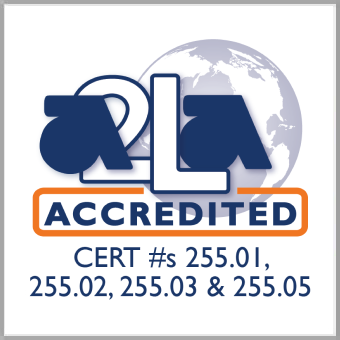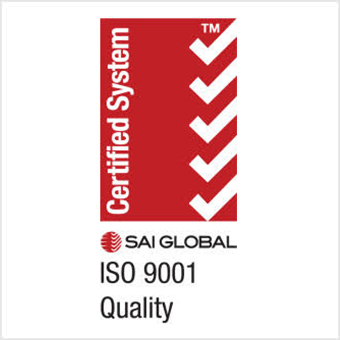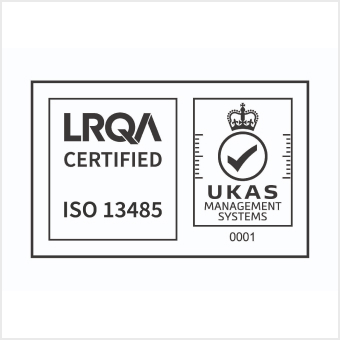ASTM D471
1. Introduction to ASTM D471
ASTM D471 is a standard test method developed by ASTM International for evaluating the effect of liquids on the physical properties of rubber materials. The test measures how rubber specimens respond when exposed to various liquids, such as oils, fuels, solvents, and water. Rubber is commonly used in applications where it is subjected to the presence of different liquids, and understanding how it behaves in these environments is critical to ensuring the material’s durability, performance, and longevity.
The effects of liquid exposure on rubber can include swelling, hardening, softening, cracking, or degradation of mechanical properties like tensile strength and elongation. The goal of ASTM D471 is to quantify these changes in a standardized and reproducible manner, providing valuable data to manufacturers, engineers, and material scientists.
2. Purpose and Scope of ASTM D471
The primary purpose of ASTM D471 is to assess how rubber materials react when immersed in specific liquids under controlled conditions. The scope of the test includes:
- Assessment of Physical Property Changes: The test method evaluates changes in properties such as tensile strength, elongation, hardness, and volume change due to liquid exposure.
- Determination of Compatibility with Liquids: The test helps determine whether a given rubber formulation is compatible with a particular liquid, ensuring that the material remains stable and functional over time.
- Simulated Real-World Conditions: The standard aims to simulate conditions that rubber components may experience during their service life, helping to predict the material’s performance in practical applications.
This test is applicable to a wide range of rubber materials, including elastomers, vulcanized rubbers, and synthetic rubbers, which are commonly used in seals, gaskets, hoses, and other components exposed to liquids in automotive, industrial, and consumer applications.
3. Overview of the Testing Process
The ASTM D471 test procedure is designed to expose rubber specimens to specific liquids and measure the resulting changes in their physical properties. The process involves several key steps:
- Sample Preparation:
- Size and Shape: Rubber samples are prepared in a specific shape and size, typically rectangular or cylindrical, to ensure consistent exposure to the testing liquid.
- Cleaning: The specimens must be cleaned thoroughly to remove any dirt, grease, or contaminants that could interfere with the test results.
- Initial Measurements: Before immersing the rubber specimens in the liquid, their initial properties (e.g., weight, dimensions, and hardness) are measured to establish baseline data.
- Exposure to Liquids:
- Test Liquids: Rubber specimens are exposed to a specific liquid or a set of liquids, such as oils, fuels, solvents, or water. The choice of liquids depends on the intended application of the rubber material and the types of chemicals it may encounter.
- Immersion: The specimens are submerged in the liquid for a predetermined period, which could range from a few hours to several days, depending on the test requirements.
- Temperature Control: The test is typically conducted at room temperature, but higher or lower temperatures may be used to simulate the operating conditions of the rubber in real-world applications.
- Duration of Exposure:
- The length of time for immersion is an important factor. Shorter immersion times may simulate initial exposure, while longer times represent long-term performance. The test duration is typically specified in the standard, but it can be adjusted depending on the specific needs of the study.
- Evaluation of Physical Changes:
- Weight Change: After exposure, the rubber samples are weighed to determine any changes in mass, which can indicate swelling or absorption of the liquid.
- Volume Change: Changes in volume are measured by calculating the dimensions of the sample before and after immersion.
- Hardness: The hardness of the rubber is measured using a Shore durometer before and after exposure. A decrease in hardness indicates softening, while an increase may indicate hardening due to liquid absorption or chemical reaction.
- Tensile Strength and Elongation: The rubber’s tensile strength (the maximum stress it can withstand before breaking) and elongation (the ability to stretch) are measured to assess the mechanical properties after exposure to the liquid.
- Visual Inspection:
- After testing, the rubber samples are visually inspected for any surface changes, such as cracking, discoloration, or other signs of degradation.
- Reporting Results:
- The results are typically presented as a percentage change in properties (e.g., weight gain or loss, changes in hardness or tensile strength). These data help assess the suitability of the rubber material for use in environments where it will encounter specific liquids.
- The degree of degradation or change in material properties is classified according to the severity of the effects observed.
4. Key Properties Measured in ASTM D471 Testing
Several critical physical properties of rubber are measured during the ASTM D471 test:
- Tensile Strength: This property measures the maximum stress the rubber can endure before breaking. A significant reduction in tensile strength after liquid exposure indicates a weakening of the material.
- Elongation: Elongation refers to the ability of rubber to stretch without breaking. A decrease in elongation after testing indicates that the rubber has become stiffer and less flexible due to liquid exposure.
- Hardness: Hardness is a measure of the rubber’s resistance to indentation. A Shore A durometer is commonly used to measure the hardness of rubber materials. If the hardness increases significantly, the rubber may have become brittle due to the liquid exposure.
- Weight Change: The weight of the rubber specimen is compared before and after exposure to determine if the material has absorbed the liquid or experienced mass loss.
- Volume Change: Changes in the volume of the rubber specimen can indicate swelling or shrinkage due to liquid absorption or chemical reactions with the liquid.
- Visual Inspection: After exposure to the liquid, the sample is examined for physical changes such as cracking, discoloration, or surface degradation. These observations help determine the overall effect of the liquid on the rubber.
5. Test Liquids in ASTM D471
The liquids used in ASTM D471 testing are selected based on their relevance to the rubber’s intended application. Common test liquids include:
- Oils: Used to simulate exposure to automotive lubricants, engine oils, and hydraulic fluids. Oils can cause rubber to swell or soften, which may affect the performance of rubber seals, gaskets, and hoses.
- Fuels: Gasoline, diesel, and other fuels are tested to evaluate the rubber’s resistance to fuel spills, vapor exposure, and leakage in automotive and industrial applications.
- Solvents: Chemicals such as acetone, toluene, and alcohols are used to assess the rubber’s resistance to solvents that it may encounter in industrial settings.
- Acids and Bases: Exposure to acidic or basic chemicals can test the rubber’s ability to withstand chemical degradation in environments such as chemical processing or agriculture.
- Water: Although water is a relatively mild liquid, it can still cause swelling or degradation in certain rubber materials over time, especially in marine and outdoor applications.
- Other Liquids: Additional liquids, such as cleaning agents or food-grade chemicals, may also be used depending on the intended application.
6. Applications of ASTM D471
The results from ASTM D471 testing are highly relevant across multiple industries where rubber materials are exposed to liquids:
- Automotive Industry:
- Seals and Gaskets: Rubber seals, gaskets, and o-rings in vehicles are exposed to oils, fuels, and coolant fluids. ASTM D471 helps ensure that these components retain their performance and integrity in real-world conditions.
- Aerospace:
- Fuel and Hydraulic Systems: Rubber components in aerospace applications are often exposed to fuel, oils, and hydraulic fluids. ASTM D471 testing helps determine if materials can withstand these chemicals without degrading.
- Medical Devices:
- Elastomers in Medical Devices: Many medical devices, such as rubber stoppers, seals, and tubing, come into contact with liquids such as sterilizing agents or saline solutions. Testing using ASTM D471 ensures that these materials remain functional and safe.
- Industrial Manufacturing:
- Rubber Hoses and Tubing: Rubber hoses used in industrial settings are exposed to a wide range of chemicals, oils, and solvents. ASTM D471 helps ensure that these hoses maintain their flexibility and strength in harsh conditions.
- Consumer Goods:
- Rubber Products: Everyday consumer products such as rubber mats, footwear, and toys may come into contact with a variety of liquids, including cleaning agents and oils. ASTM D471 helps ensure that these products are durable and safe for use.
- Construction:
- Rubber Components in Construction: Seals and gaskets used in construction, especially those exposed to water or chemical spills, are tested for resistance to swelling and degradation through ASTM D471.
- Food and Beverage:
- Food-Grade Rubber: Rubber components used in food and beverage processing equipment, such as seals and gaskets, must withstand exposure to food oils, water, and cleaning agents. ASTM D471 ensures that these materials do not degrade when exposed to such substances.
7. Limitations and Considerations
There are several important considerations and limitations when performing ASTM D471 testing:
- Real-World Conditions: While ASTM D471 simulates exposure to liquids, real-world conditions can be more complex. For instance, rubber materials may be subjected to multiple types of chemicals, varying temperatures, and mechanical stresses simultaneously.
- Test Variables: The results can be influenced by test variables such as liquid concentration, exposure time, and temperature. These factors should be controlled and clearly stated in test reports.
- Material Variability: Different rubber formulations can respond very differently to the same liquid, so results are specific to the type of rubber being tested.
8. Conclusion
ASTM D471 is a vital test method for evaluating the effects of liquid exposure on rubber materials. By assessing key properties such as tensile strength, elongation, hardness, and volume change, this standard helps ensure the durability and performance of rubber materials used in applications where they are exposed to oils, fuels, solvents, and other liquids. The test is critical in various industries, including automotive, aerospace, industrial manufacturing, medical devices, and consumer goods.



